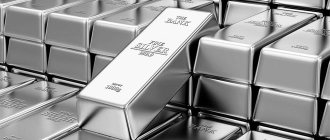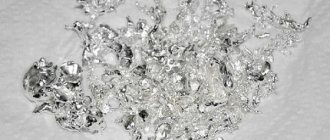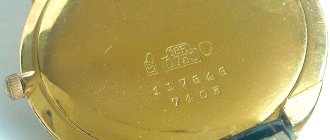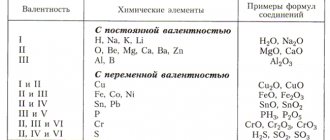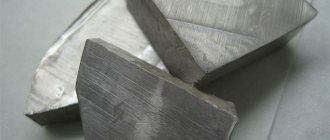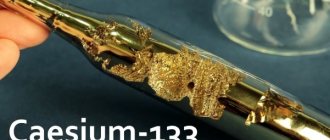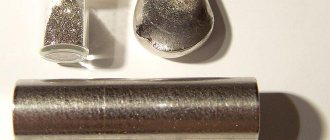Since ancient times, humanity has been using precious metals to create accessories and luxury decorative items. Gold and silver are the most common noble metals that are used in combination with each other to form an alloy. Gold (aurum) is a very soft and ductile metal that is impractical to use in its pure form. Silver (argentum) gives gold the desired strength, making jewelry more wear-resistant. In jewelry, different alloys of precious metals are used, differing from each other in the ratio of components.
Physicochemical characteristics
Aurum is the heaviest metal in nature, which is resistant to acids and alkalis. It has a high density and melts at temperatures above 1000 degrees. The boiling point of aurum exceeds 3000 degrees Celsius. Despite this, gold is a very soft metal - its hardness index on the Mohs scale does not exceed 2 points. If aurum was used in its pure form in the jewelry industry, then products made from it would deteriorate the first time they were worn - they would become deformed and covered with scratches.
Alloy of gold and silver
Silver is a precious metal that increases the strength and improves the malleability of gold. An alloy of gold and silver is an ideal material for the production of jewelry. In this combination, the elements are present in different proportions, which determines the value of the material.
Metals of group I of the secondary subgroup (Cu, Ag, Au)
Copper, silver and gold - these metals were among the first to be mastered by man. They were used to mint coins, make household items, tools and jewelry.
Over time, silver and especially gold became a universal measure of material values. The production of gold from other metals was the subject of alchemy - the brightest page in the history of human thought, which gave rise to modern chemistry. Since then, people’s lives have changed almost beyond recognition, and gold is still a symbol of wealth and a standard of value...
Copper
Copper
The Latin name for copper – Cuprum – comes from the name of the island of Cyprus, where already in the 3rd century BC. there were copper mines. The Russian “copper” probably goes back to the word “smida”, which meant metal among the ancient Germans.
Although copper is sometimes found in nature in the form of nuggets (the largest found weighed 420 tons), the bulk of it is found in sulfide ores, such as chalcopyrite CuFeS2. A less common mineral is malachite, a green basic copper carbonate (CuOH)2CO3.
The first metallurgical processes did not use sulfide ores, but malachite, which did not require pre-firing. Reduction smelting was carried out in clay vessels filled with ore and coal and placed in a small pit. Carbon monoxide (II) is formed during incomplete combustion of coal, reducing malachite ore:
2CO + (CuOH)2CO3 → 3CO2 + 2Cu + H2O.
The temperature that develops in this case (1100 – 1200°C) makes it possible to obtain molten copper (tmelt = 1083°C).
Copper is a very soft metal, so starting from the 3rd millennium BC. Bronze products began to replace copper products - harder and more durable. Most likely, bronze (an alloy of copper and tin) was first obtained by accident, when processing ore containing both metals. For two thousand years (until the beginning of the 1st millennium BC), bronze was the main material for the production of tools. Archaeologists call this era the Bronze Age.
Malachite
Pure copper conducts electricity very well, second only to silver, which is why wires are made from it. An alloy of copper and nickel - constantan (60% Cu, 40% Ni), on the contrary, is characterized by high resistance - it serves as the basis for rheostats. Bronze (90% Cu, 10% Sn) and brass (20–80% Cu, the rest Zn) are harder than copper, resistant to oxidation, and have a low coefficient of friction. They are used in chemical engineering and for the manufacture of bearings, gears, and gearboxes. Nickel silver - an alloy of composition 50% Cu, 25% Zn, 25% Ni - is used in the production of medical equipment and in jewelry. The copper-nickel alloy cupronickel (80% Cu, 20% Ni) is used to make medical instruments, coins, and dishes.
Copper is used in electroplating - producing exact metal copies of various objects by electrolytic deposition of metal on the surface of a plaster mold.
Approximately 10 million tons of copper are smelted around the world every year, and the demand for this metal is constantly increasing.
Unlike its neighbors in the subgroup - silver and gold - copper reacts directly with oxygen. When heated in air, the products turn black, becoming covered with a layer of copper (II) oxide CuO. And at temperatures above 1000°C, another oxide is formed - Cu2O.
When exposed to air for a long time, copper becomes covered with a film of malachite, formed by the reaction 2Cu + O2 + H2O + CO2 = (CuOH)2CO3. Bronze monuments and old roofs of Western European cities owe their color to this substance.
In the series of voltages, copper is to the right of hydrogen, therefore it reacts only with oxidizing acids: nitric, concentrated sulfuric. The exception is hydroiodic acid, which reacts with copper to release hydrogen and form a very stable copper (I) complex H[CuI2].
Perhaps the most famous copper compound is copper sulfate, or copper (II) sulfate pentahydrate, CuSO4∙5H2O. In ancient times, this substance was obtained from the crystallization of solutions formed in copper mines during rain. Copper sulfate was used to blacken leather, in medicine, and in the production of colored glass. Nowadays, copper sulfate is used in agriculture to control plant pests, displacing the much more poisonous salt 3Cu(AsO2)2∙Cu(CH3COO)2 - Schweinfurt green.
Copper plays an important role in the life processes of organisms - it is part of some enzymes involved in the oxidation reactions of organic compounds. The copper-containing enzyme cytochrome oxidase catalyzes the processes of tissue respiration. Proteins, which include copper, affect carbohydrate metabolism, fat synthesis, and the formation of vitamins P and B. The daily requirement of copper for a person is about 2-3 mg. Milk and yeast are especially rich in this element. However, in large quantities, copper compounds are harmful: ingestion of 2 g of copper sulfate can lead to death.
Silver
Silver bullion
The Latin name for silver – Argentum – is associated with the color of this metal; it goes back to the Greek “argos” - “white”, “brilliant”. The Russian word “silver,” according to scientists, comes from the word “sickle” (sickle of the moon). The shine of silver is reminiscent of the mysterious moonlight and alchemists, who used the sign of the moon as a symbol of the element.
The oldest silver items discovered in Western Asia date back to the 5th millennium BC. They are made of native silver. Often such nuggets are colored light yellow, since they are not pure silver, but an alloy with gold (the Greeks called it “electron”). Finds of silver nuggets are extremely rare, so it is not surprising that until the end of the 1st millennium BC. silver was more expensive than other metals, even gold. The situation changed only after around the 6th century. BC. ancient craftsmen mastered the process of separating silver from lead ores.
Some lead sulfide ores, such as galena PbS, contain significant impurities of silver sulfide Ag2S. When such ore is roasted in air, PbS transforms into Pb3O4 oxide, and silver is released in free form:
Ag2S + O2 = 2Ag + SO2↑.
Nowadays, the bulk of silver is also obtained from the processing of lead-zinc and copper ores. Often such ore contains only 0.15 - 0.25% Ag. The liquid metal smelted from lead-zinc ore is divided into two layers: the lower one contains lead, and the upper one contains zinc with an admixture of silver. When this layer is heated, the volatile zinc is distilled off in the form of vapor, and the silver remains.
Silver is a shiny, silvery-white metal (tmelt = 962°C), malleable and ductile, easy to process, the best conductor of heat and electricity among metals. In the old days, coins, vases, cups, jewelry were made from it, and caskets and robes were decorated with the thinnest silver plates. In Rus', church vessels and icon frames were made from silver. Currently, the use of silver is not limited to jewelry - it is used in the production of mirrors, electrical contacts, batteries, and is used in dentistry.
Silverware
Silver is not oxidized by oxygen, however, according to Pliny the Elder, “it becomes tarnished by medicinal waters and salty winds,” becoming covered with a black layer of silver sulfide:
4Ag + 2H2S + O2 = 2Ag2S + 2H2O.
In the series of voltages, silver is to the right of hydrogen, so it interacts only with oxidizing acids, most easily with nitric acid:
Ag + 2HNO3(conc) = AgNO3 + NO2↑ + H2O
Silver nitrate (lapis) is highly soluble in water and is the starting material for the production of other silver compounds. At 209°C it melts, and when heated to 300°C it decomposes, forming silver: 2AgNO3 = 2Ag + 2NO2↑ + O2↑. Lapis has a cauterizing and astringent effect on the skin; it is used in medicine in the form of lapis pencils.
Silver hydroxide AgOH is a strong base, however, it is so unstable that when an AgNO3 solution is exposed to alkali, it is not AgOH that precipitates, but a brown precipitate of Ag2O oxide. A colorless solution formed by the interaction of Ag2O with ammonia solution: Ag2O + 2NH3 + H2O = 2[Ag(NH3)2]OH, already in the 17th century. used for silvering mirrors.
In 1727, the German scientist I.G. Schulze discovered that some silver salts, for example AgCl chloride, decompose in light to form a metal. AgI and AgBr are even more susceptible to this - they were part of the emulsion of black and white photographic film.
It has been noticed that pathogenic bacteria in water die even when the silver content in it is 10-9 g/l - this concentration of Ag+ ions is created when silver objects are added to the water.
Gold
Gold nugget
Even in ancient times, the golden color of the metal was associated in the minds of people with the color of the sun. So, according to one version, the Russian name of the metal comes from the word “sun”. The Latin name of the element (Aurum) means “yellow”.
Gold, which does not change when stored in air and does not rust, was a symbol of eternity. Alchemists called him the king of metals, the most perfect of all substances. The transformation of base metals into gold was a tempting dream of many medieval scientists. Interestingly, today this transformation has become possible with the help of nuclear reactions, but artificial gold turns out to be much more expensive than natural gold. A sample of such gold, obtained by neutron irradiation of the mercury isotope 196Hg, is stored in Chicago at the Museum of Science and Industry. Alchemists would be even more surprised if they knew that gold itself in nuclear reactions serves as a raw material for the production of isotopes of francium and astatine - elements that practically do not exist in nature.
Gold is a golden-yellow metal (tmelt = 1064°C), so soft and ductile that it can easily be rolled into the thinnest foil that can be ground into powder. “Gold, due to its fairly yellow color and brilliant lightness, is different from other metals,” M.V. Lomonosov wrote about it.
In nature, gold occurs in the form of small grains mixed with sand or gravel - products of the destruction of gold-bearing rocks. True, sometimes large nuggets are found - weighing several tens of kilograms.
The ancient Egyptians extracted gold from gold-bearing veins running through quartz rocks. Repeatedly heating the rock in the fire and dousing it with cold water, people crushed the stone, then pounded it in mortars, ground it, and only then washed it with water, laying it out on an inclined plane. The washed gold was melted into ingots. During the times of Ancient Rome, the main supplier of gold was Spain, where it was washed out of the earth extracted from the mines.
Golden mask of Tutankhamun
The extraction of gold in the Middle Ages was described in detail by the German scientist Georg Agricola. Gold ore was ground into flour and mixed in special barrels, at the bottom of which there was mercury. The mercury wetted and partially dissolved the gold to form an amalgam. It was separated from the rest of the rock and decomposed by heating. At the same time, the mercury evaporated, and the gold remained in the distillation apparatus.
Since the 19th century To extract precious metals, the cyanide method began to be used: in air, gold reacts with a solution of sodium cyanide, forming a complex salt - sodium dicyanoaurate (I):
4Au + 8NaCN + 2H2O + O2 = 4Na[Au(CN)2] + 4NaOH,
and when such a solution is treated with zinc, it is released in free form:
2Na[Au(CN)2] + Zn = Na2[Zn(CN)4] + 2Au↓.
Today, rocks with a gold content of more than 0.0001% are considered gold-bearing. Scientists have found that some microorganisms are capable of absorbing gold. A promising biochemical method for extracting gold from waste rocks is based on this discovery.
About half of the world's gold is used in jewelry. Jewelers never work with pure metal, because it is so soft that it is easily scratched and deformed. Gold containing impurities of other metals - copper, silver, iron - often has one color or another: from yellow and reddish-brown to pinkish or even greenish.
Due to its high electrical conductivity and chemical inertness, gold is actively used in modern technology: contacts, electric heaters, and watch cases are covered with a thin layer of this metal. About 40 kg of gold were used to make the American space shuttle Columbia.
Another area of application of this metal is medicine. At the end of the 19th century. German microbiologist Robert Koch discovered that potassium tetracyanoaurate (III) K[Au(CN)4] stops the growth of tuberculosis bacteria, and since the 20s. XX century gold preparations, for example sanocrysin Na3[Au(S2O3)2]∙2H2O, began to be used to treat tuberculosis, arthritis, and also as an anti-inflammatory agent.
Gold is unusually resistant to most oxidizing agents: it does not react with oxygen and does not displace hydrogen from acids. However, it is incorrect to talk about the complete inertness of gold: alchemists already knew about its ability to interact with aqua regia. The most traditional method of oxidizing gold is treating gold foil with chlorine in concentrated hydrochloric acid: 2Au + 3Cl2 + 2HCl = 2H[AuCl4]. From the resulting chloroauric acid, other gold compounds are obtained. All of them can be easily restored to metal.
Download:
Download free essay on the topic: “Copper” COPPER.docx (255 Downloads)
Download free essay on the topic: “Gold” Zoloto.docx (273 Downloads)
Download for free an essay on the topic: “ Gold and its processing” Gold-and-its-processing.docx (264 Downloads)
Download free essay on the topic: “Silver” SILVER.docx (259 Downloads)
You can download abstracts on other topics here
Similar
What is electrum?
The very first alloy of silver and gold in human history was invented in ancient Egypt, and it was called electron, or electrum. Due to the fact that the combination of elements consisted of 50% silver, products made from such material had a white tint. However, the key characteristic of electrum products was their strength, achieved due to the high silver content.
The technology for creating electrum has become the basis for the production methods of various jewelry alloys used today.
History of metal
Silver has attracted people's attention since ancient times. The word “silver” comes from the Latin “argenta”, translated into Russian as white. The beautiful, pure color of silver was compared to the shine of the moon.
The production of silver jewelry was first organized by the inhabitants of ancient Egypt. At that time, silver was valued much more than gold and was very expensive. The first silver mines were founded by the Phoenicians before our era. Active work on metal mining was carried out in Spain and Greece.
At that time, silver jewelry was considered an extraordinary luxury; only titled persons could afford to purchase it. The Roman emperors had luxurious silver salt shakers on their tables.
The properties of the metal silver have been known since ancient times. It is not only a jewelry metal, but also an excellent antiseptic. In ancient times, healers used it to treat wounds, then the healing process occurred faster. In many countries, coins were made from silver (including in Rus').
| Latin name | Argentum |
| Atomic number | 47 |
| Atomic mass of the element | 107,87 |
| Density | 10500 kg/m³ |
| Melting temperature | 960.8 °C |
| Heat capacity | 0.234 kJ/(kg °C) |
| Electronegativity | 1,9 |
| Covalent radius | 1.34 Å |
List of alloys
The value of a silver-gold alloy is determined by the quantitative content of aurum, since it is a more expensive metal. A sample helps determine the gold content in the composition - a measure that demonstrates how many grams (parts) of solar metal are contained in a kilogram of material. The set of remaining elements is called a ligature.
In the metric system of samples, the following samples of gold are distinguished:
- 375: A kilogram of jewelry material contains 375 grams of gold. This means that most of the composition is a combination of less valuable metals, in which argentum predominates.
- 500: Here both elements are mixed in equal proportions, so this alloy is called electrum (electron).
- 585: Most jewelry is made from 585 aurum as it is the most wear-resistant material and can be easily processed.
- 750: the material is characterized by plasticity, explained by the peculiarity of the composition. Products made from purity 750 aurum are popular in the East.
- 916: medical composition on the basis of which orthodontic prostheses are made.
Pure 999 gold is used in the production of bank bars, a sought-after investment item offered by banks.
The shade of a metal alloy is determined by its composition: the more aurum it contains, the yellower the material will be. In addition to silver, the alloy also contains other chemical elements: copper, zinc, palladium, etc. These impurities, together with silver, are classified as alloys. Today, jewelry masters create magnificent jewelry of various shades, combining the components of the ligature, obtaining red, white, lemon and even purple (amethyst) gold.
What makes precious metals strong?
Only thanks to the ligature do gold and silver become suitable for making jewelry, and in the case of silver, cutlery. What is this, a ligature? In simple terms - impurities of other metals that add strength.
The gold ligature contains 41.5% of 100% of the total metal in the product. From this the most common test was born, i.e. the remaining 58.5% is converted into the 585 hallmark. Of course, there is also the 375 and 750 hallmarks. The gold of such hallmarks is, respectively, stronger and less durable than the 585 hallmark.
In the ligature of the most common gold standard, i.e. 585, includes: copper, silver, nickel and palladium. Depending on the shade of the product, you can guess which additional metal is more. In sample 375, only copper and silver are present, but in sample 750, on the contrary, platinum is also added to the list of metals of sample 585.
If we consider silver in the same way, then the alloys in it are 7.5%, i.e. The product contains 92.5% pure silver, which corresponds to 925 purity. Like gold, white metal also has different grades. But they are completely unsuitable for jewelry.
The ligature for jewelry silver is copper. This is what makes jewelry more durable. Due to the low content of this metal, the red color does not appear in any way in the alloy with silver.
Varieties of gold and silver alloys
The most common hallmarks in Russia are 56, 72, 82, 94. There can be many gold compounds. They all differ in color, strength and cost. Today, alloys of different colors are known, for example, yellow, for the production of which we take 14% of pure precious metal, 6-7 parts of silver and 3-4% of red copper. Depending on the amount of material, the name of the sample is determined. Red alloys are also widely popular. To create them, you need 14% pure precious metal, 2% silver and a maximum of 2% red copper.
To get green gold, you need to use from 2 to 9% pure precious metal, 2% silver and 1% cadmium. Depending on the quantity of these ingredients, the sample is determined. A gray gold alloy is produced using 30% pure gold, 8% silver and 2% steel. Blue can be obtained by mixing 3% pure precious metal and 1% steel. White gold is created using the following mixture: 11% pure gold + 1% platinum.
Gold mining
People have been mining gold since time immemorial. Humanity had already encountered gold in the 5th millennium BC. in the Neolithic era, thanks to its spread in the aboriginal state.
According to archaeologists, the mining system began in the Middle East, from where gold jewelry was delivered, especially to Egypt. In Egypt, in the tomb of the queen of lords and one of the queens Pu-abi Ur in the Sumerian civilization, the first gold jewelry of the 3rd millennium BC was found. e.
The beginning of gold mining in Russia is considered to be May 21 (June 1), 1745, when Erofey Markov, who found gold in the Urals, announced its discovery in the office of the General Council of Factories in Yekaterinburg.
Over the entire history of mankind, about 140 thousand tons of gold have been mined (if you melt all this gold together, you will get a cube with a side of about 19 meters).
There are about 16 gold mining companies in Russia. The leader in gold mining in Russia is Polyus Gold, which accounts for about 20% of the market. The largest amount of gold is mined in the Chukotka Autonomous Okrug, Krasnoyarsk and Amur regions.
Proven world reserves of gold are estimated at 100 thousand tons.
In 2009, South Africa left the top three gold mining companies. China is in first place (314 tons), followed by Australia (227 tons) and the USA (216 tons). In 2009, 183 tons of gold were mined in Russia.
Other alloys with gold
In the jewelry industry, alloys are used to make gold jewelry, the main part of which is gold. How are gold alloys different?
- 375 Alloy: This gold is low grade as it is only 37.5% gold, which is only 375 grams of precious metal per kilogram of weight. This alloy can be safely called two-component, since it consists of gold and copper. The latter gives it a reddish tint.
- 500 standard: 50% of this alloy consists of gold. The remaining half comes from impurities. However, this composition of the alloy makes it low-cast, and therefore inapplicable in jewelry.
- 585 standard: products are considered the most popular among jewelry buyers. The structure of such an alloy allows you to “play” with shades. For example, if silver and palladium predominate in 41.5% of the alloy, then in this way you can obtain exquisite white gold, much like platinum. Adding copper and a small amount of silver, taken in equal parts, to the ligature allows you to achieve the effect of rose gold. Another type of 585 alloy is yellow gold. It received its name due to its rich yellow color as a result of the combination of alloy metals in equal parts.
- 750 standard: this metal is considered the most popular in eastern countries, but in Russia products made from it are also popular. Products with a purity of 750 contain at least 75% of the precious metal, while the ligature accounts for only 25%.
- 916 standard: on the Russian jewelry market it is almost impossible to find jewelry made of this metal. At the same time, such an alloy is widely used in jewelry in the East.
- 999 standard: this is pure gold, it can only be found in the form of bank bars.
There are also other gold alloys. As for the medical field, a gold alloy with a purity lower than 750 is never used here. Thus, a metal with a purity of 900, which consists of 900 grams of gold, 60 grams of copper and 40 grams of silver, is used in medicine as a raw material for the production of bridges and crowns Gold with purity 585 is an ideal material for the production of clasps.
The benefits of gold
Gold jewelry is an excellent gift for friends or relatives and a pleasant purchase for yourself. It can be stored for years and passed from mother to daughter. The gold alloys available on the market today are of high quality. There are people with individual intolerance to certain components, for example, cadmium or zinc, so it is worthwhile to find out about the composition of the alloy before purchasing, so that you do not have to resell the product later. If you have an intolerance to any of the precious metals, you can always do gold plating on the area that comes into contact with the skin, for example, on the stem of the earrings. This simple procedure will allow you to wear any metal jewelry.
Gold alloys are created to provide maximum variety to the jeweler's artistic vision. So, if in many countries only pure gold is priced, in Europe and the CIS the design and relevance of the model are valued. This is why even alloys with low gold content can be very expensive. Buy gold for yourself and your loved ones, or simply admire the beauty of this sunny metal, warming with its golden hue at any time.

